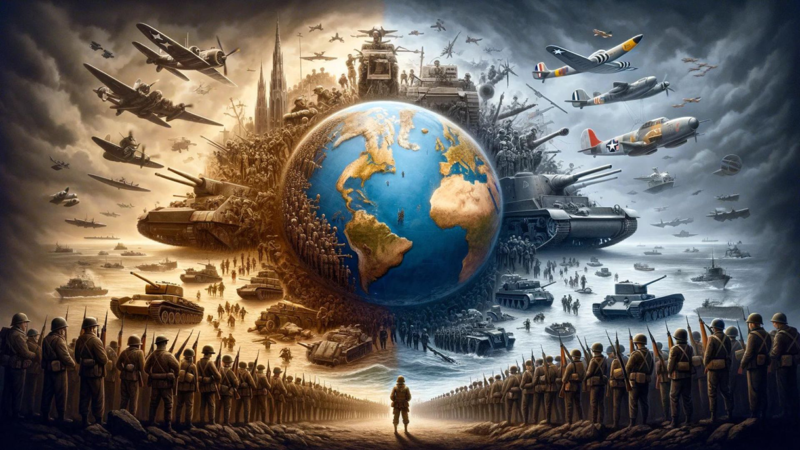
World War II was one of the most significant and devastating conflicts in human history. Spanning from 1939 to 1945, it involved nations from across the globe, reshaping borders, economies, and societies. This article provides a brief yet comprehensive look at the causes, key events, and consequences of the war.
Causes of World War II
World War II stemmed from unresolved issues from World War I, the Treaty of Versailles, and economic hardships during the Great Depression. The rise of totalitarian regimes in Germany, Italy, and Japan created a volatile political landscape, with leaders like Adolf Hitler, Benito Mussolini, and Emperor Hirohito seeking to expand their territories through aggressive militarization.
The Outbreak of War
The war began on September 1, 1939, when Nazi Germany invaded Poland, leading Britain and France to declare war on Germany. This invasion sparked a conflict that would engulf Europe and beyond. Early in the war, Germany achieved quick victories through “Blitzkrieg,” or lightning warfare, overtaking Poland, Denmark, Norway, Belgium, and France by 1940.
Major Theaters and Turning Points
World War II was fought across multiple fronts, notably in Europe, the Pacific, North Africa, and Eastern Asia.
- The Battle of Britain (1940): Germany launched an extensive air campaign against Britain, but the Royal Air Force’s resilience marked Hitler’s first major defeat.
- The Eastern Front (1941–1945): Germany’s invasion of the Soviet Union in Operation Barbarossa proved disastrous as the brutal Russian winter and fierce Soviet resistance led to heavy losses. The Battle of Stalingrad (1942-1943) marked a significant turning point, as the German forces faced a decisive defeat.
- The Pacific Theater (1941–1945): After Japan’s attack on Pearl Harbor in December 1941, the United States joined the war. Key battles, including Midway and Guadalcanal, gradually shifted momentum against Japan.
- D-Day and the Liberation of Europe (1944): On June 6, 1944, Allied forces launched Operation Overlord, storming the beaches of Normandy, France. This marked the beginning of the liberation of Western Europe from Nazi control.
The War’s Conclusion and Aftermath
In 1945, Allied forces closed in on Germany from the west, while Soviet forces advanced from the east. Adolf Hitler committed suicide in April, and Germany surrendered on May 7, 1945. Meanwhile, in the Pacific, Japan continued to fight until the United States dropped atomic bombs on Hiroshima and Nagasaki in August 1945, leading to Japan’s surrender on September 2, 1945.
The Impact and Legacy of World War II
World War II left an indelible mark on global history. Approximately 70–85 million people perished, and the war’s devastation brought about the end of the colonial era and the emergence of the United States and the Soviet Union as superpowers, setting the stage for the Cold War. The United Nations was established to promote peace and prevent future conflicts, and the war prompted significant advancements in technology and medicine, shaping the modern world.
Conclusion
World War II was a transformative period that reshaped political landscapes, prompted technological innovations, and influenced the modern geopolitical order. Understanding this global conflict helps us grasp the enduring impacts on contemporary society and the importance of maintaining international peace and cooperation.







